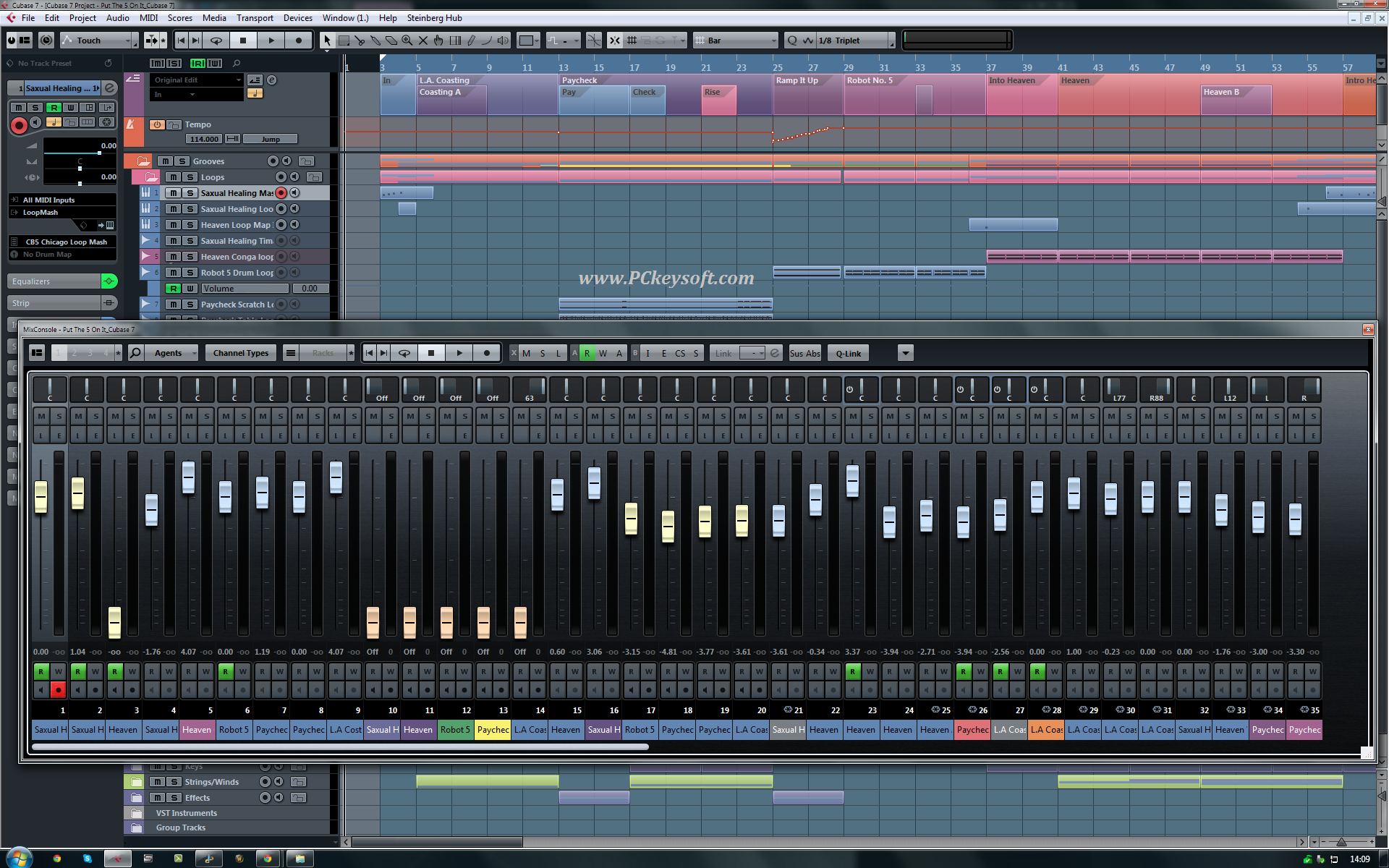
Suddenly my songs look far less crowded, as I disabled the view for a whole group of MIDI channels. In the past I always made some folders, calling them “unused” or “already used.” Now I can just disable the track in the View Agent window, and it is not presented in the arrangement window any more. The View Agent works also in the arrangement window. I read something about that, but I haven’t opened it too much, as I did that so many times in the past that I have fulfilled my “VST Channel” quota for three next lives. The “good” old VST Channels window is now only for fine-tuning some parameters. Instrument Track 2.0 fixed something that bothered me with Cubase for a long time: Finally I can load multitimbral instruments directly into the arrangement window, adding a new track, selecting the input and using other instruments on other channels, or track lanes, without leaving the main window. Every new audio track is automatically blessed with hitpoints (hitpoints are markers separating audio signal relatively to the attack). The new, simple, one-click audio quantisation is a heavenly addition for such a skilled instrumentalist as I am. You can activate or deactivate them with just one click. And almost not to mention is the channel strip where you get all the essential controllers designed in an old-school, classic studio console style: EQ, compressor, noise gate, EQ position, Envelope shaper, Saturation (using Magneto 2 plugin) along with a limiter. All that makes this part of the sequencer very usable and user-friendly. There is a Q-Link button for temporarily linking the channels, all varieties of buttons for quickly selecting or deselecting various things, and an easy way to add or dismiss parts of the mixer window, along with the ability to hide some channels with just one click. Also, the possibility to have a row with a track equalizer where you can quickly fix some settings, or just copy it with a right-click and paste it onto any track, is a real bonus (or maybe I should misspell it as a “boner” as I’m not a native English speaker 😉 ). So no more clicking endless buttons to see insert or send effects. To be honest, that is the only thing that I’m interested in – achieving the best results in the minimum time. The first thing that sold me on Cubase 7.5 was a new mixer: It gives you the impression of being in a real recording studio actually the whole new version gives that impression, the feel of a really big recording studio. Not that I necessarily had to do that, as at the end of the line I just got it for reviewing purpose, but seeing all the improvements and new additions, I knew that this will not be just a one-night adventure. And a week later I’ve decided to switch back to Cubase.

So, it was my turn to roll up my sleeves, take a deep breath, watch various “what’s new” video tutorials….
TEAM AIR CUBASE 7.5 HOW TO
Not only that, they even implemented some really new elements that I hadn’t expected, and, what’s more, they made me feel like I was being an idiot, as they changed so many things that I didn’t even know how to use the sequencer I knew for so many years.


Obviously the Steinberg team took very seriously that decision of mine, taking a deep breath, rolling up their sleeves and nailing all the issues that bothered me. And last year I decided to switch to a competitor’s DAW, as they offer some better solutions for some details that bothered me with my old version of Cubase. I grew up musically with Steinberg, but because of some money issues I stuck with version 5. He tells us all about his change of heart. But in a chance encounter with Version 7.5, his old steady won him back. Alex Arsov left Cubase some while ago for another.


 0 kommentar(er)
0 kommentar(er)
